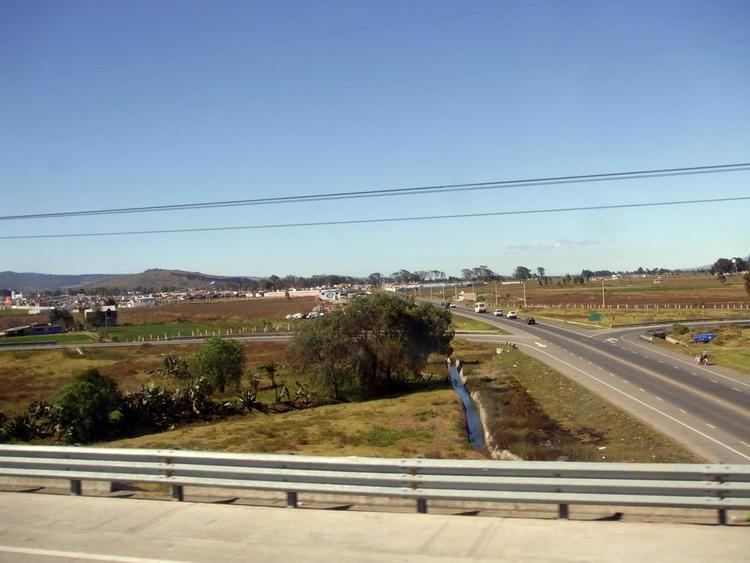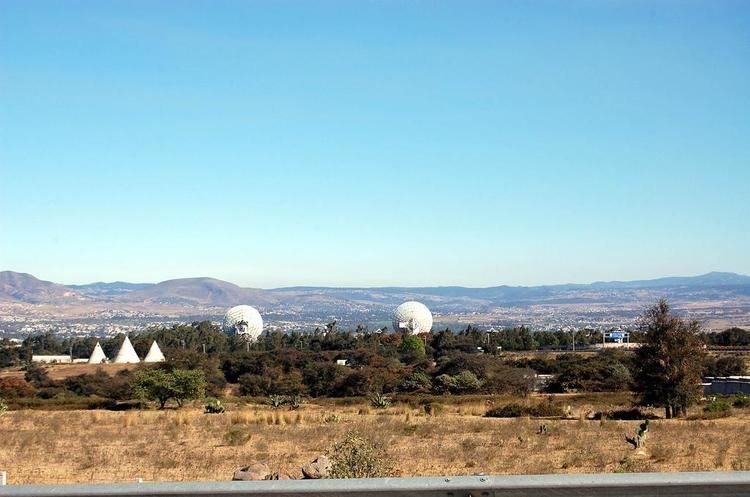Country Elevation 2,181 m Area 290.4 km2 | State Population 151,584 (2010) | |
Tulancingo (officially Tulancingo de Bravo; Otomi: Ngu?hmu) is the second-largest city in the Mexican state of Hidalgo. It is located in the southeastern part of the state and also forms one of the 84 municipalities of Hidalgo, as well as the Archdiocese of Tulancingo. Located 93 km from Mexico City, this area is the most important wool textile producer in the country and was home to El Santo, Mexico’s most famous lucha libre wrestler. It is also home to the Huapalcalco archeological site, which was the forerunner to the Teotihuacan civilization. The name derives from the Nahuatl words “tule” and “tzintle” which mean “in or behind the reeds.” This is confirmed by its Aztec glyph.
Contents
- Map of Tulancingo
- Kartell adventuresports training location tulancingo hidalgo
- History
- Economy
- References
Map of Tulancingo
Kartell adventuresports training location tulancingo hidalgo
History

The area is home to some of the oldest settlements in Latin America in Huapalcalco and El Pedregal. These first settlements have been attributed to the Olmecs, Xicalancas and other tribes. A city was founded in 645 BCE by the Toltecs with the name Tolancingo as part of the empire centered in Tula. During this period, the city was home to school and temples. A calendar stone was sculpted here and a temple called Mitlancalco was built to receive the bodies of priests and princes. After 1116 CE, the Toltec Empire declined and the city was abandoned.

According to the Tribute Codex (Codice de los Tributos), the Tulancingo area was a commercial center for the Otomi-Tepehua and Totonaca people since about 1000 CE bringing traders from lands now in the states of Hidalgo, Puebla and Veracruz. Traditional trading still exists in the form of the Thursday “tianguis” or market.
The Chichimecas came to rule here under Xolotl starting around 1120. The city was refounded by these people and the remaining Toltecs. The population increased with the arrival of the Tlaxcaltecas. In 1324, a king named Quinantzin, reorganized the area politically, making Tulancingo the head of a province. Tulancingo marched against Texcoco, but was defeated. In the early 15th century, this same Texcoco, under Huitzilihuit, conquered Tulancingo, putting it within the Aztec Empire. In 1431, the Tulancingo area was again reorganized politically under Itzcoatl and Nezahualcoyotl.
During the Spanish Conquest, Prince Ixtlilxochitl gathered an army here to join Hernan Cortes to conquer Tenochtitlan. Officially, the area came under Spanish rule in 1525, and evangelists arrived soon afterwards. The Franciscans arrived from Texcoco to build a hermitage in the Zapotlan neighborhood. This would eventually became the modern cathedral, consecrated to John the Baptist. This was the beginning of the European city, which was initially constructed for the use of Europeans only; no indigenous were allowed to live there. Those indigenous who worked in city were obliged to live outside it on the outskirts at the base of the Cerro del Tezontle. Today this area is known as Colonia Francisco I. Madero and is part of the city proper.
The Valley of Tulancingo was partitioned between Francisco de Avila and Francisco de Terrazas. The fertile soil and warm climate attracted many Spanish settlers, especially older ones. In time, the area became known as the “Retiring place of Old Conquistadors.”
During the Mexican War of Independence, the city was attacked several times by insurgents in 1812, 1814 and 1815. However, royalist forces were able to hold the city until Nicolas Bravo and Guadalupe Victoria took it in 1821, near the very end of the war. Bravo remained here for a time, founding a newspaper called El Mosquito de Tulancingo and constructing a gunpowder factory. This would lead to “de Bravo” being added as an appendage to the city’s name in 1858. After Agustin de Iturbide was proclaimed emperor in 1822, he maintained a residence in Tulancingo, where he was supported by the populace. When Iturbide was dethroned, he withdrew from Mexico City to Tulancingo on his way to Veracruz and into exile.
Under the 1824 Constitution, Tulancingo was head of a district of the then enormous State of Mexico, which today are the states of Mexico, Hidalgo, Morelos and Guerrero. The Tulancingo district included the areas around Apan, Otumba, Pachuca, and Zempoala.
Despite the ouster of Iturbide, Tulancingo favored a centralist form of government, rather than the state-based federalist one. It would provide refuge to centralists such as Nicolas Bravo during most of the 19th century. Bravo’s forces were attacked here by federalist forces under Vicente Guerrero in 1828. Guerrero was victorious and Bravo fled into exile. In 1853, dictator Santa Anna imprisoned federalist Melchor Ocampo in the city. Because the city was loyal to the centralist cause, Ocampo was not placed in prison, but rather allowed to walk the streets where the citizens would supervise him. This continued until Santa Anna decided to send Ocampo out of the country.
During the French Intervention in Mexico, the large State of Mexico was divided into three military districts for defensive purposes. The one in which Tulancingo belonged would eventually become the state of Hidalgo. President Benito Juarez could not hold Tulancingo and French troops entered in 1863. French emperor Maximilian I would use the same house in this city that Iturbide used before. This emperor divided the country into fifty departments, making Tulancingo the head of one of them.
In 1863, Tulancingo made the city the head of a see, under the archbishopric of Mexico City, despite desires to have the head of this see in Huejutla. Its territory included parishes from Puebla, Hidalgo and Mexico State. Soon after Juarez and the federalists ousted the Emperor Maximilian, the state of Hidalgo was created. Tulancingo was considered as a place to locate the new state’s capital but Pachuca was chosen instead.
During the Mexican Revolution, forces loyal to Francisco I. Madero under Gabriel Hernandez took Tulancingo in 1910. Madero himself visited in 1912. Forces loyal to Venustiano Carranza took the city in 1915, with Carranza visiting in 1916.
The municipal territory contains a number of small rivers and streams as well as mountainsides, making it susceptible to flooding. Two most recent major floods occurred in 1999 and 2007. Major flooding occurred in and around the city in 1999, with communities such as La Rosa, on the outskirts, the hardest hit, when rivers and streams overflowed. The flooding was caused by heavy and prolonged rainfall which affected several states in the region. Over 500 houses were abandoned in the city at the height of the disaster. Hurricane Dean caused flooding damage again in 2007, when in less than 12 hours of rain, eighteen colonias were underwater with water pouring off mountainsides. Many houses were completely destroyed and a number flooded by sewerage. Those here were among the estimated 100,000 affected in Hidalgo state.
Economy
The economy of the municipality divides into three sectors, agriculture, manufacturing, industry and mining and commerce. Agriculture employs 5.9% of the population, manufacturing, industry and mining employ 30.5% and commerce employs 63.6%.
